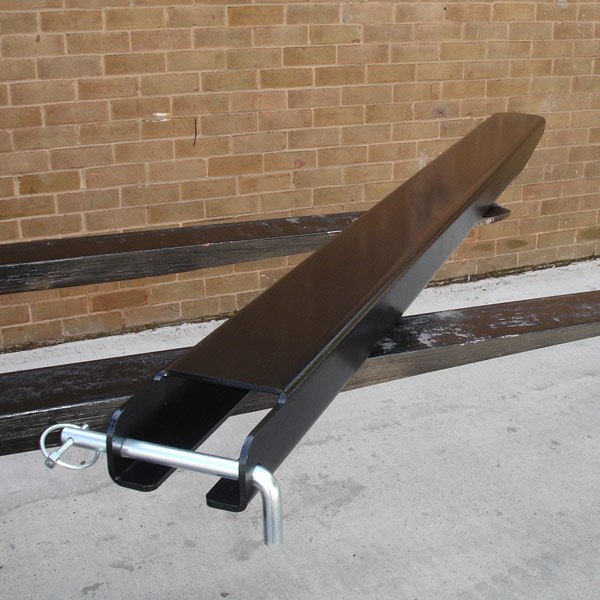Why use fork extensions?
Forklift trucks are essential to a great many businesses, helping them lift and move loads around site as part of daily operations. Every forklift has a maximum load capacity weight, and this must stay within the forklift truck’s load centre of gravity to remain safe and stable.
Forklifts operate by counterbalancing the weight of the truck itself with the weight of the load. When this is overloaded, the forklift is at risk of tipping over. Although a forklift weight capacity should never be exceeded, it is possible to spread the weight using fork extensions.
What is a forklift extension?
A forklift extension is an attachment designed to increase the length of the forks on a forklift. Extending the length of the forks allows the same vehicle to handle larger or longer loads that the standard forks cannot safely manage.
Why use fork extensions?
Businesses may opt to use fork extensions to help them handle awkward loads they are struggling to manage using regular forks. Fork extensions increase productivity by enabling one vehicle to handle different sized loads effectively.

When to use fork extension?
Fork extensions are commonly used in warehouses, construction sites, and other environments where lifting and transporting bulky items is necessary. They are useful to any business that wants to extend the standard length of the forks to carry larger loads.
What are the rules for using fork extensions?
As with any forklift use, operators should stay compliant with the legal guidance to remain safe when using a vehicle fitted with fork extensions. Extra vigilance should be taken, and forklift operators should treat a forklift with fork extensions as already partially loaded.
To remain safe, businesses should:
- Only use extensions when it is approved as safe by the manufacturer to ensure compatibility.
- Never exceed the specified capacity of the forklift when using extensions. The load capacity decreases as the length of the extensions increases.
- Never exceed 150% of the length of the original forks. For example, if the original forks are 54 inches long, the extensions should not be longer than 81 inches.
- Ensure the load is evenly distributed and properly centred on the forks to prevent tipping or instability.
- Secure the extensions by fastening them to the original forks using locking pins to prevent them from slipping during operation.
- Avoid loading using the tips of the fork extensions. Instead, make sure the centre of the load is over the main forks.
- Train forklift operators to use the extensions safely.
- Get a regular safety inspection for fork extensions.

How to use fork extensions?
Here’s how the forklift extensions should be attached to the forklift forks:
- Position forks to correct distance apart, relative to the vehicle.
- Remove the fork pocket heel pins from the extensions.
- Drive the forks into the fork extensions.
- Insert the fork pocket heel pins directly behind the heel of the fork and attach safety lynch pin into the holes provided.
- The extensions are now ready for use.
Extra considerations when using forklift extensions:
- Extensions make the forklift longer, so make sure visibility is clear for manoeuvring.
- Operate the forklift at slower speeds and make wider turns to accommodate the extended length.
- Operators should be trained on the specific use of fork extensions, including the handling of longer loads and the altered centre of gravity.
- Like with any forklift attachment, fork extensions need regular inspections for signs of wear and tear. Remove damaged extensions from service immediately.
What is the maximum length of forklift extensions?
To remain safe and within the legal guidelines of use, there is a recommended maximum length for forklift extensions. The commonly accepted rule is that the length of the fork extensions should not exceed 150% of the length of the original forklift forks.
Do extensions for forklifts need to be certified?
Yes, fork extensions, as with any forklift attachment, need to be inspected and certified every 6 months, as per LOLER guidance.
The business or owner of the fork extensions is responsible for having a valid Report of Thorough Examination. The operator of the extensions has a responsibility to carry out daily checks to make sure they are safe and in good working condition.

Can forks and forklift extensions be repaired?
Yes, some damage and wear and tear on fork extensions can be repaired. Here at Invicta, we carry out repairs that don’t just mend, but extend the life of the product. Repairs not only save on the cost of a replacement but are the sustainable alternative.
It’s important any repairs are carried out by a professional using the right equipment.
We hope you found this article useful, and learned all about why businesses use fork extensions. Find out more about our forklift extensions and or download our Invicta overview brochure for our most popular forks and attachments.
Back to all blog posts
